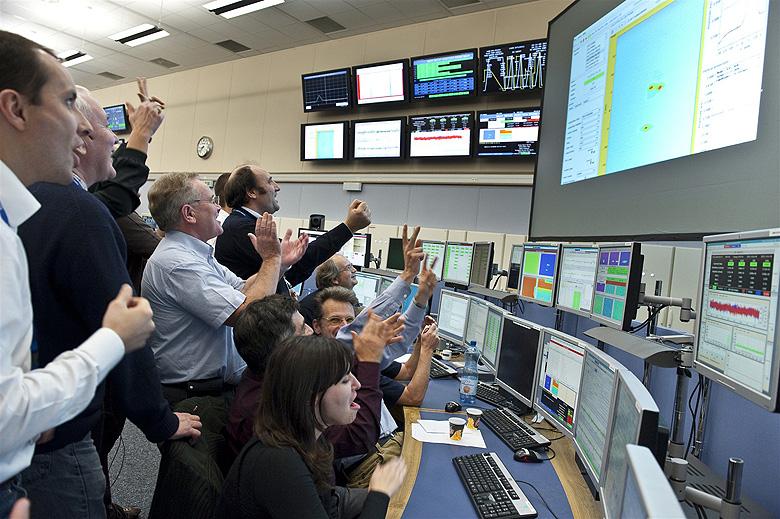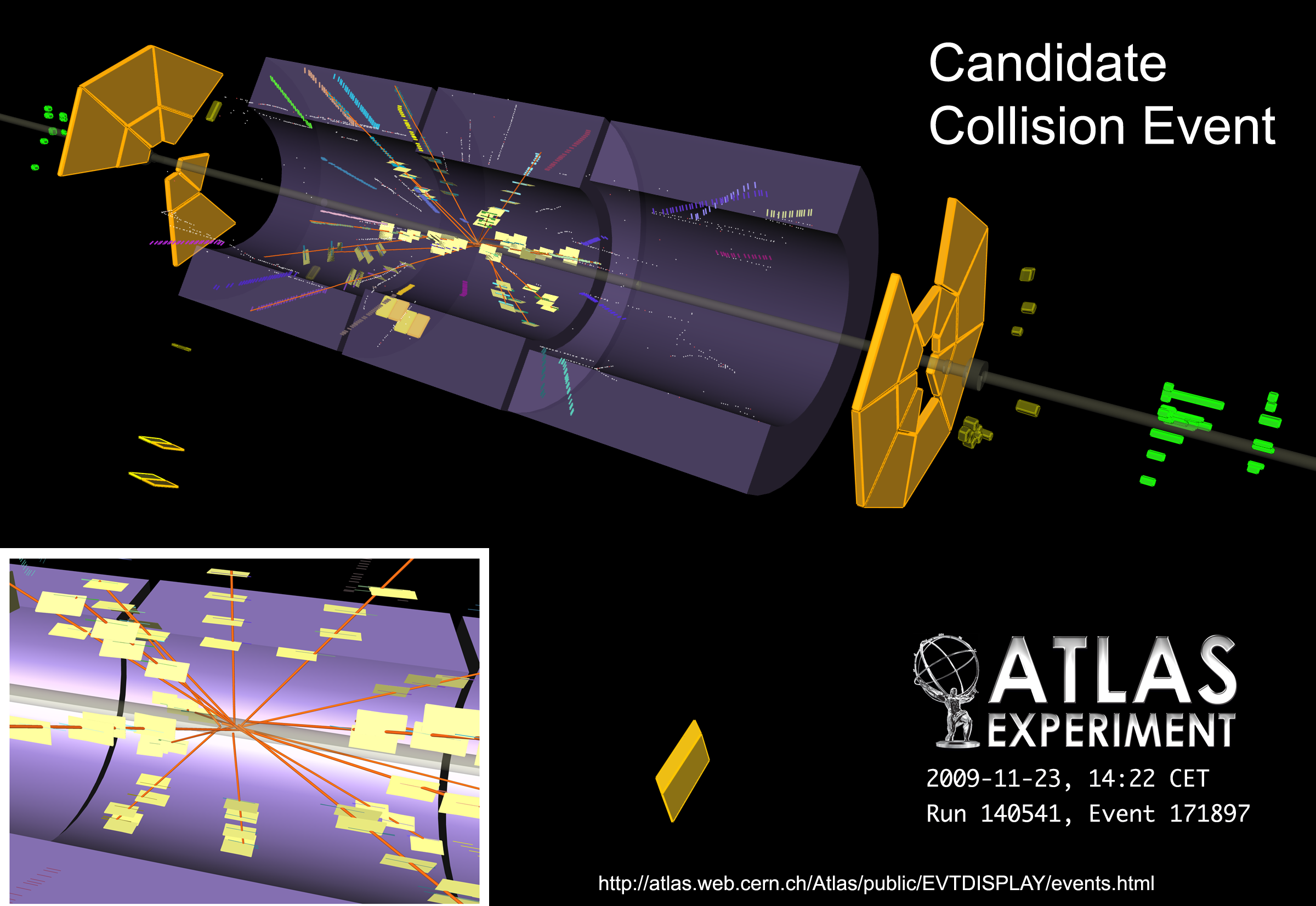Just over a year ago, TRIUMF Research Scientist Chris Oram, who supervised the building of the ATLAS Hadronic Endcap Calorimeters (HEC) for the Large Hadron Collider (LHC), made a bet with his colleagues that collisions in the LHC wouldn't occur until after he returned from his year-long bike trip across Asia. We are delighted to announce that Oram has lost this bet.
The much-anticipated restart of the world's most powerful particle accelerator, the LHC at CERN in Geneva, Switzerland, took place on November 20, 2009. At ten o'clock that evening, operators established a clockwise circulating beam, followed by a circulating beam in the other direction a few hours later (you can follow the progress of the beams on twitter at www.twitter.com/cern).
 |
| Celebrations in the CERN Control Centre during restart of the LHC on Friday, November 20, 2009. |
Today, the LHC passed its next important milestone: successfully circulating two beams simultaneously and then colliding them together. The day began with two circulating beams and ended with first collisions in four detectors: ATLAS, CMS, ALICE, and LHCb. These low-energy collisions will allow the operators to test the synchronization of the beams and give experimenters their first chance to gather collision data, enabling important calibration work to be carried out. This is an important milestone on the road towards first physics at the LHC. Operators are now working to improve beam quality and lifetime and to ramp up to half the design energy for first real physics running in early 2010.
"It's great to see beam circulating in the LHC again," said CERN Director General Rolf Heuer in a press release Friday. "We've got some way to go before physics can begin, but with this milestone we're well on our way."
TRIUMF's current ATLAS Group Leader, Isabel Trigger was ecstatic about the collisions: "This is a moment I have been waiting for since I first worked on ATLAS R&D as a summer student. I have been looking at simulated ATLAS collisions for such a long time that it is almost incredible to believe that this is finally the real thing!"
 |
| 3D display of a candidate collision event showing tracks in the ATLAS Experiment. |
During the initial start-up of the LHC in September 2008, the machine suffered a serious incident due to a failure in an electrical connection. Now, after more than a year's worth of repairs and recommissioning involving the addition of thousands of new sensors, valves, and other components to prevent a repeat of last year's incident, things are looking up. Recommissioning the LHC began in the summer, and successive milestones have been regularly passed since then.
In all, an estimated 10,000 people from 60 countries have helped design and build the LHC accelerator and its four massive particle detectors. "It's been a herculean effort to get to where we are today," said Steve Myers, CERN's Director for Accelerators and Technology. "I'd like to thank all those who have taken part, from CERN and from our partner institutions around the world."
Canada has played a major role in several components of the LHC, including essential contributions to the construction of the accelerators in the LHC chain, responsibility for critical parts of the ATLAS experiment design and construction, high-level trigger system, Tier-1 computing facility, Tier-2 analysis facilities, and soon physics!
The first LHC Status Report will be given this Thursday, November 27, 2009, by Myers along with short statements from the Experiments. The report will be available via webcast at www.cern.ch/webcast.
For photos, video, and latest information, see http://press.web.cern.ch/press/lhc-first-physics/
--Meghan Magee, Communications Assistant
Based on CERN Press Releases: "The LHC is back" and "Two circulating beams bring first collisions in the LHC."
Photos courtesy of CERN
